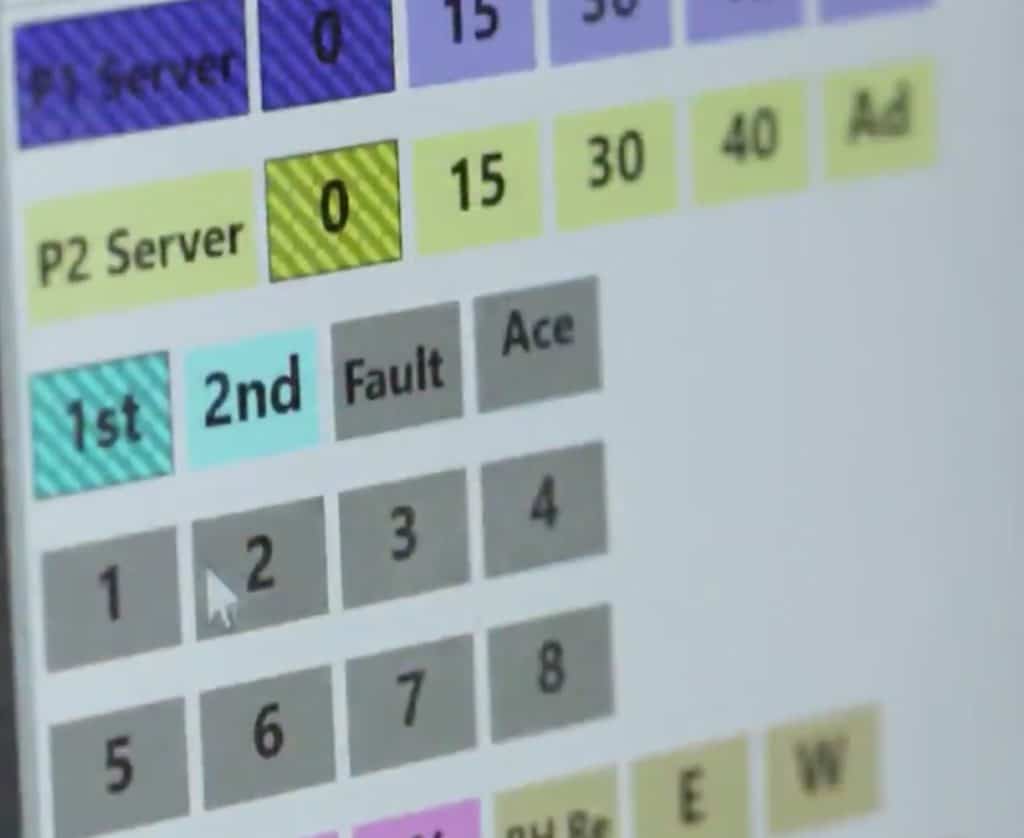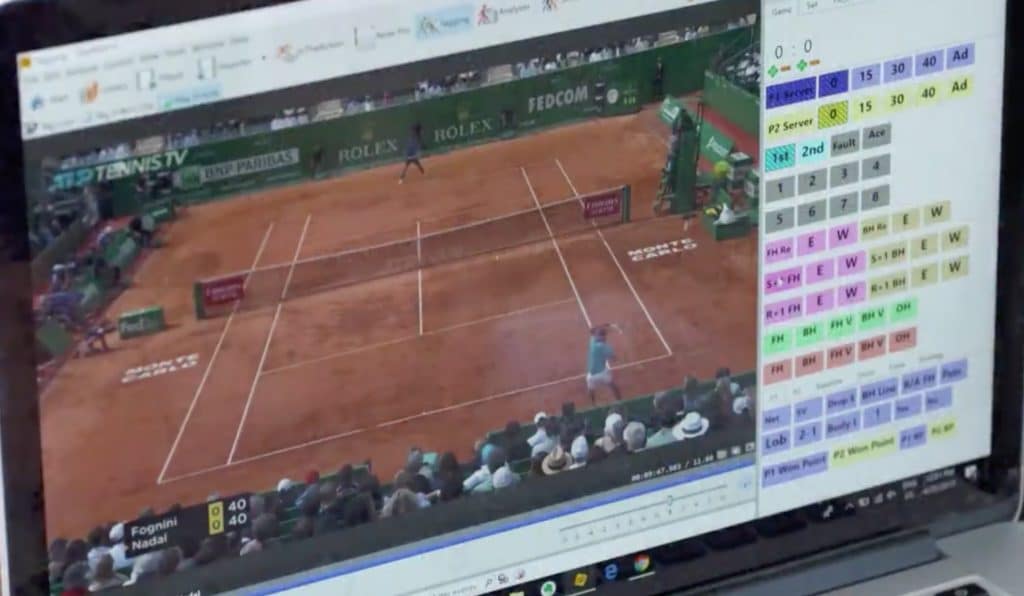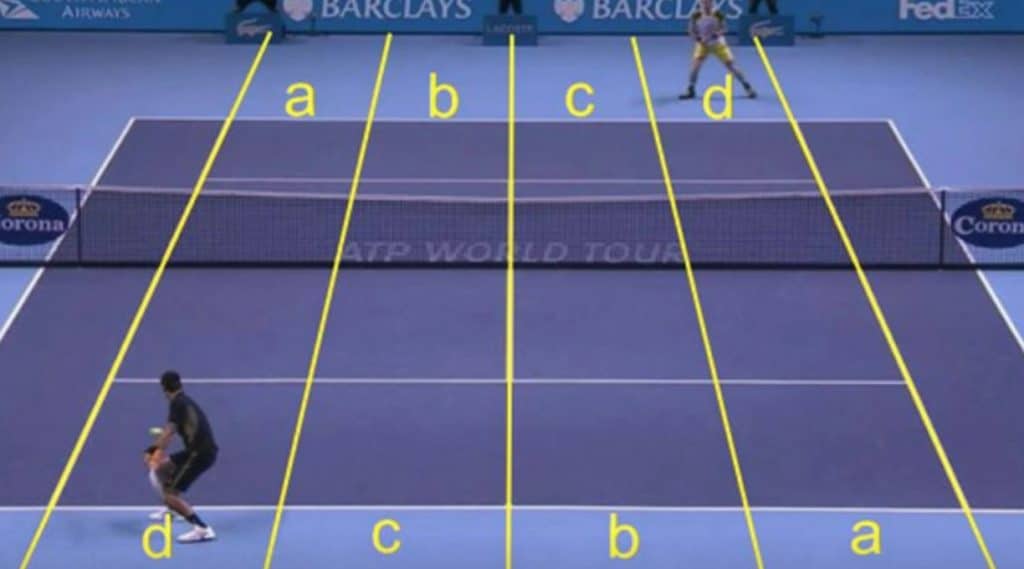In this exclusive Dartfish interview, discover how one of the best tennis minds in the world uses Dartfish software to help game plan for the world’s #1 player, Novak Djokovic, before every match he plays.
Coach Craig O’Shannessy explains:
- The difference between how kids training today and what he did growing up.
- How he got started in tennis, and what he’s doing today for Team Djokovic.
- How you can use Dartfish to uncover patterns that you couldn’t see before, including an example of something he found on the pro tour in 2011.
Craig O’Shannessy is the strategy analyst for the ATP World Tour, Wimbledon, Australian Open, Team Djokovic and the Italian Tennis Federation. He is also the founder of Brain Game Tennis where he writes and has online courses to help tennis players understand strategy on the tennis court.
Craig is interviewed by Will Boucek. Will is a former college tennis player and has worked with some of the top coaches in the US. He’s been a featured writer for Tennis Congress, Women’s Tennis Blog, and is the founder of Tennis Tribe Marketing and The Tennis Tribe.

Will:
So for people who don’t know you, give us a quick summary.
Craig:
I grew up in Australia and played a lot of tennis as a junior. When I was younger, it wasn’t the traditional way of learning as a junior. Today it’s all about academies and drills. When I grew up, it was all about going to the club and playing sets constantly with other players, whether they were juniors or adults.
I played lots and lots of sets. I think that that helped me develop the strategic side of the game, because you’re always competing. You’re playing five or six sets a night, 40 sets a week. Whereas I think kids today, as a comparison, may go a whole week and not play in a set, so I think that that helped me a lot.
Will:
Okay, and what are you doing now?
Craig:
I’m off the court still earning all of my income in tennis, but it’s in a non-traditional way where it’s more analysis and writing stories, and doing presentations all over the world.
I’m establishing and writing courses online to help players understand what our sport really is all about, the new metrics of what really happens in a match. I’m helping players understand that and then improve their practice accordingly. Practice what happens in a match.
Will:
Okay, awesome. How did you get started with all of this? When did you dive into the analytics and strategy side of tennis?
Craig:
Dartfish was a major part of it when they came out with the match tagging module in the mid-2000s. It enabled me to tag matches and look at a match by patterns of play, rather than chronologically, which was really the only option before that.
So now I can cut the match up and look at all the forehand errors, or the backhand winners, or the forehand returns, or the serves out wide. Once you cut a match up into patterns, it’s much easier to understand which patterns are working for you, which ones need improving, and which patterns you should be doing more of. So, these are things that I’ve thought about early on in my coaching career, but Dartfish match tagging really enabled me to put it all into practice.

Will:
Okay. Can you elaborate a little bit on what you mean by watching chronologically vs breaking it up into patterns?
Craig:
Yes. So normally you’re going to watch the first point of the match, then the second, then the third, and the first game followed by the second game. You can break tennis down into four major components which are serving, returning, rallying, and approaching. But within each of those, there are derivatives.
For example, in serving, you’ve got first serves out wide. You want to know how many times your player goes there. How many times they make it? What is that win percentage? Where does the ball come back? Is it a better hitter forehand or backhand as the first shot after the serve?
So you have these moments in time that are separated in a match. A serve out wide may happen in the first game and it may not happen again until the fifth game. So, it’s very hard to put those two elements together, to understand that pattern, if you don’t have Dartfish.
You’re going to see it in the first game, and then a lot of water is going to go under the bridge by the fifth game. So, you forget the importance of it earlier. Now when you can watch it again and again and again, one after the other, the patterns come to life, because you can see only that pattern and not get it confused or muddied with other things that happen in the match.

Will:
Okay, awesome. So you’re also working with Djokovic. Can you describe a little bit of what you do for him without spilling the beans?
Craig:
There are two main areas.
One is analyzing what he does in matches so that we have a very clear understanding of what works for him and where he creates separation from opponents. Which patterns he may be underutilizing, what patterns work really well for him that he may not realize are as important to winning matches as they are.
So, then we look to the other side of the court to figure out how opponents match up against him. Where are they strong? Where are they weak? Should you go with the weakness initially, or should you hit a couple of shots and then move them to that weaker area of the court?
So, for each match since the start of 2017, I’ve provided a match analysis report on exactly how to play each opponent, and we use Dartfish to derive that information.
Will:
With Dartfish, what’s an example of something that it has uncovered for you as a coach, that you wouldn’t have otherwise been able to learn?
Craig:
The back area of the court and the baseline I cut up into four locations, A, B, C, D. The match analyzer enables me to visually draw those edges and write those letters on the court. It greatly enhances the coaching when the video can be manipulated in such a way as to teach the patterns of play that you want to highlight to the player.

Will:
Okay. Let’s say I’m a singles player, and I come to you with some match video. What’s something specific that Dartfish can allow you to figure out about a particular player, that you can’t otherwise figure out? Maybe an example that you’ve used in the past.
Craig:
I think a very powerful part of tagging is the ability to combine matches. You can obviously tag one match at a time, but you can drag multiple matches in, so you get a bigger picture of what’s happening.
One example was when I first started working with Rajeev Ram in Atlanta. This is when Rajeev had dropped to about 180 in the world. He beat Grigor Dimitrov who was 59 in the world. Then, he beat Lleyton Hewitt who at the time was 174, and then he had a match point in the quarters against Ryan Harrison and lost 7-6 in the 3rd.
But I sat on the side of the court and watched all three of those matches, and didn’t pick up on a pattern of play about his backhand. Then we looked at all three matches, and we found the opponent’s had 18 backhand winners and Rajeev only had 1. So, that was a big flag for me to say, “Okay there’s a problem there.” We looked at the one backhand winner, was a net cord, so it was essentially zero.
Then we noticed a huge hole in his game – that he had no offense out of the backhand side. I looked at it and there were 54 forehand errors (from opponents), and there wasn’t one from the backhand down the line. So, we uncovered a big hole in Rajeev’s game that he kind of had a feeling about, but he didn’t exactly know how to get out of it. When opponents would pin him deep in the back end corner, he was going to lose almost every one of those points.
So we figured out that the backhand shouldn’t go crosscourt, but it shouldn’t essentially go straight down the line. We figured out to go more to the middle to the opponent’s forehand, which would then bring the ball back middle to his forehand, so he wasn’t hitting another backhand.
We could not have found that information out without Dartfish, and the ability to bring in multiple matches to analyze at once. Sometimes it’s a little bit of detective work, but Dartfish gives you the tools to be able to do that.
Will:
Interesting. That’s a really good example. Who would you recommend Dartfish to from a tennis perspective? When we’re talking about tennis you’ve got the players, you’ve got the coaches, even clubs and Federations. Who can best utilize a software like Dartfish?
Craig:
It doesn’t matter who it is. It matters what their goal is. If your goal is to have a clearer understanding of what’s happening in a match, Dartfish is an excellent tool for that. It’s certainly a player. It’s certainly a coach. It’s even fans of the game that want to get a little bit deeper and understand what’s going on in the match. Dartfish enables you to break it down unlike anything else that’s out there.
When you combine it with all the different modules, it becomes very unique. I think it’s not so much the person, it’s the goal and the aim. What is the end game for what you’re trying to do?


1 Comment
Pingback: Homepage